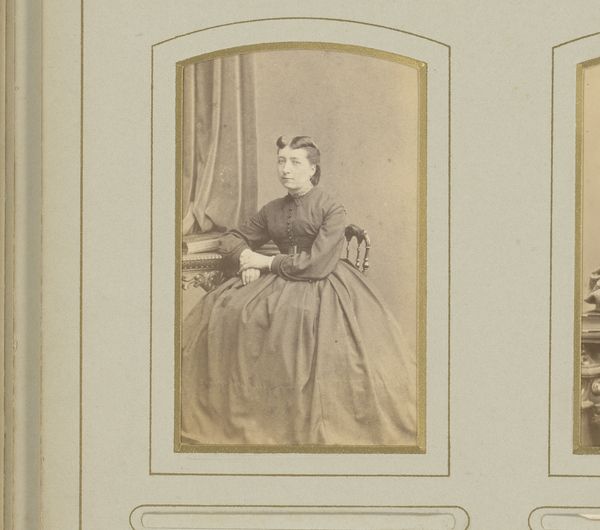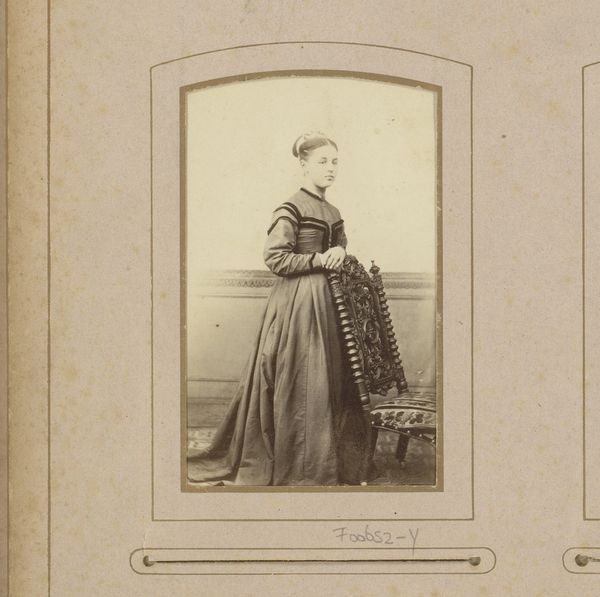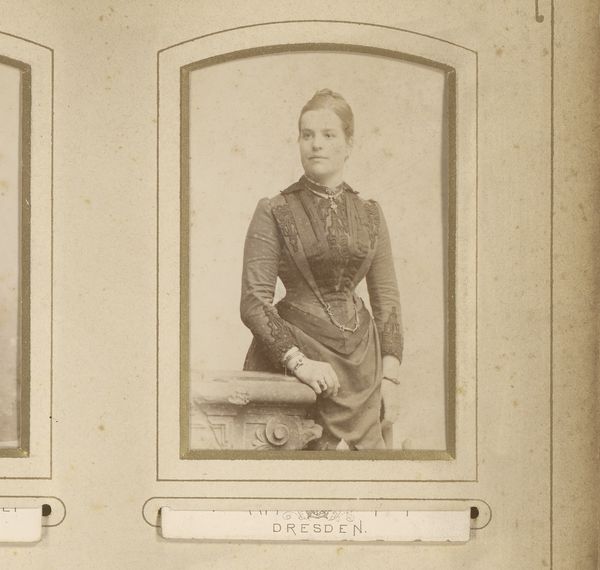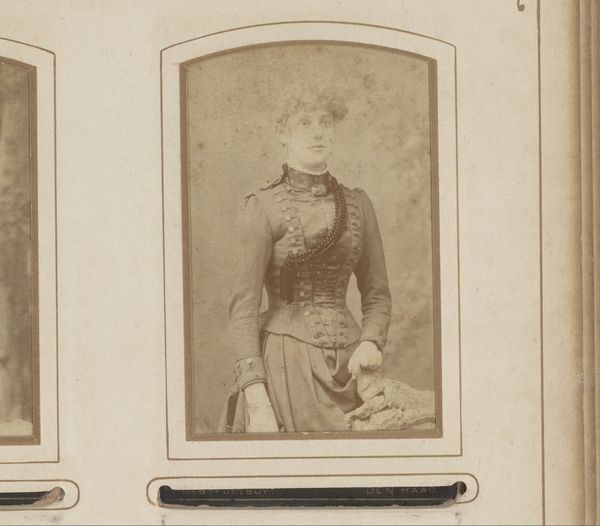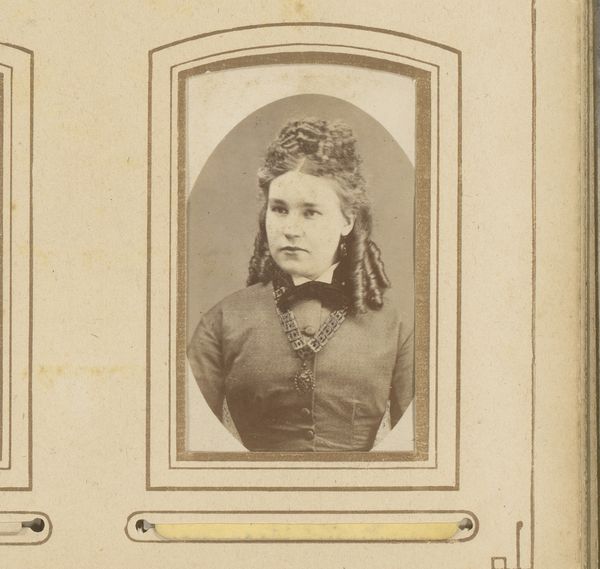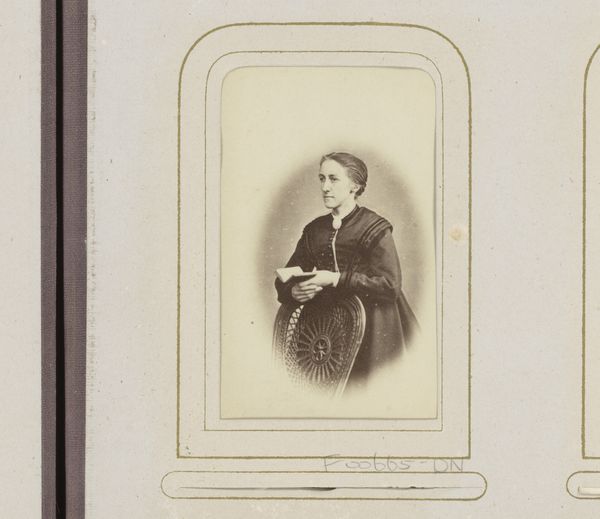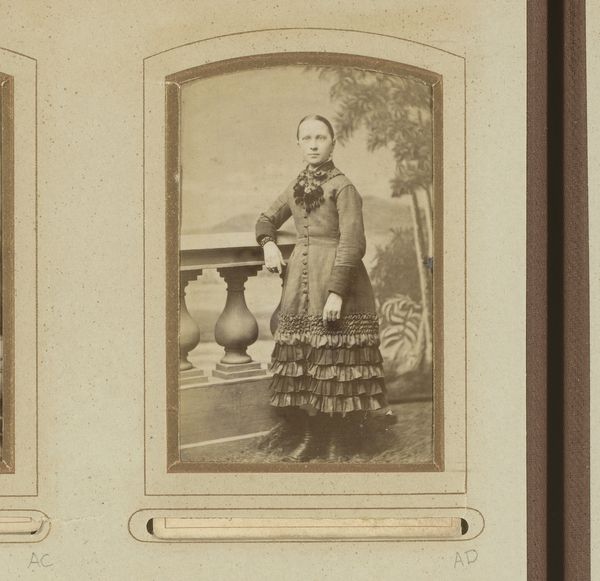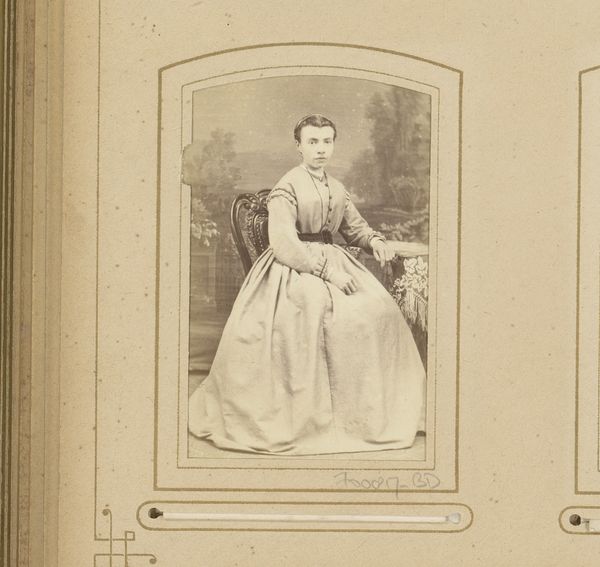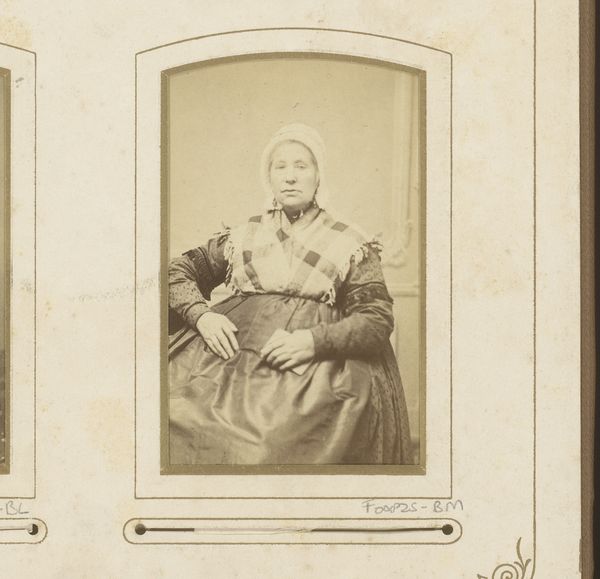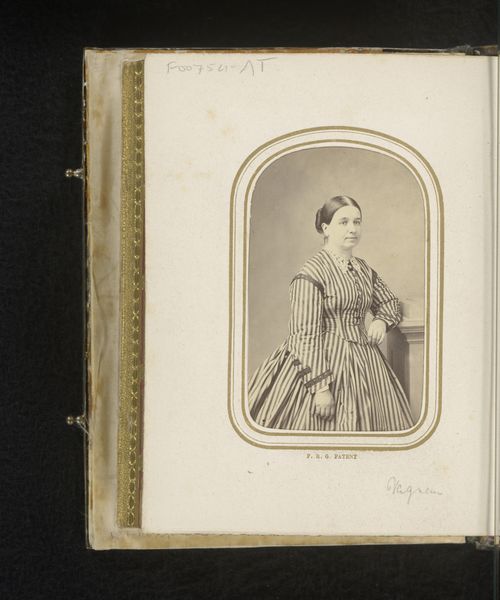
photography
#
portrait
#
photography
#
19th century
Dimensions: height 84 mm, width 51 mm
Copyright: Rijks Museum: Open Domain
Curator: This is "Portrait of a Young Woman, Standing by a Rock," a photographic print by Louis Johan Cordes, created around 1881. Editor: It has such a serene yet constrained feeling, wouldn't you agree? Her pose is so still, and that almost ghostly rock... the light gives it a soft, porous quality, doesn't it? I'm interested in its material. Curator: Indeed. Photography at this time had really entered into a commercial world and studio portraiture became a symbol of status and a marker of social standing for the emerging middle classes. The rock itself would have been a popular prop for a controlled sense of elegance. Editor: Interesting! Though the controlled elegance isn't reading so loud to me. Look at the surface of the print. It feels fragile. Like something so carefully constructed and fragile can easily crack. You wonder about the chemicals, the processes… did Cordes himself develop these, or were there studio assistants doing this sort of highly skilled labor? Curator: It’s very likely that Cordes managed the technical and the artistic directions for sure. Studios like this served a social function, too. Photography was increasingly used for documentation, for preserving memories, and to convey particular social messages that aligned with gender norms and emerging societal expectations. The controlled poses, even props like the rock and background helped reinforce social roles of young woman. Editor: Absolutely! And speaking of those social roles, consider how labor is presented – or really, isn't presented. The young woman isn’t shown actively doing anything, really reinforcing how her value would’ve been in being seen, her domestic skills all off stage. All that photographic equipment in the background also makes you wonder what went into the staging of feminine portraiture and construction. Curator: And this points to the power dynamics inherent in image creation. The photographer, often male, holds the power to frame and portray, while the sitter, in this case a young woman, becomes the subject of the photographer's vision and the broader social expectations of femininity at that moment. Editor: Precisely. And looking closely, you see that those expectations are almost materially embedded into the surface of the photograph itself, its textures and tones shaping our perception and even the sitter’s lived experience and self. I find that fascinating. Curator: I see the studio as much as part of a system of portraying class, as any stage would do so too, in constructing these images in the society and gender as performance in particular settings. Editor: It all makes you wonder, doesn't it? The material history, social underpinnings, everything encoded in what seems like a simple portrait.
Comments
No comments
Be the first to comment and join the conversation on the ultimate creative platform.


